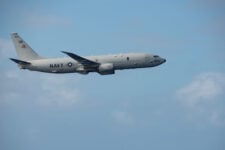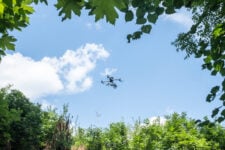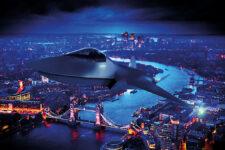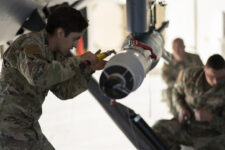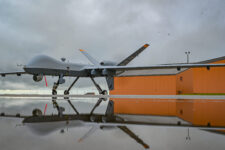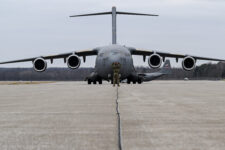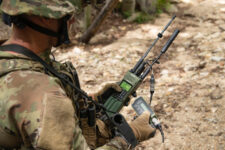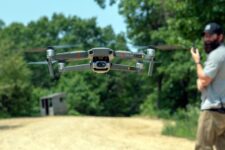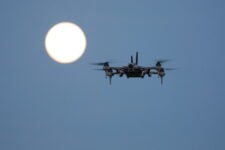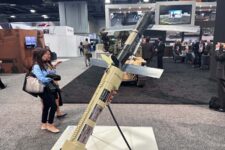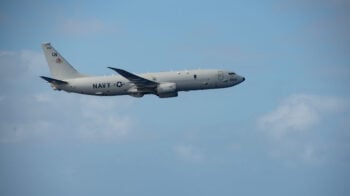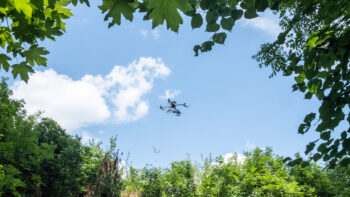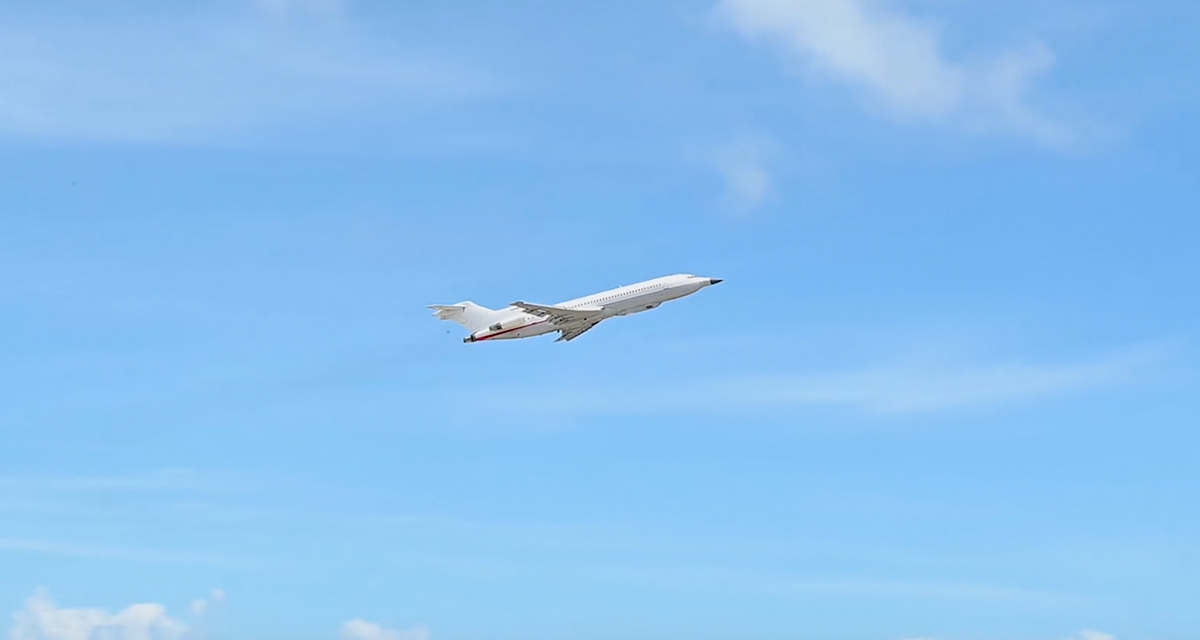
Photo Courtesy of Raytheon Intelligence & Space.
Six thousand miles off the California coast, Guam sits alone in the western Pacific. A strategic outpost for U.S. forces in an increasingly tense region, it’s known by those stationed there as the “Forward Edge,” a not-so-subtle reminder that the threat is real and close at hand.
In June 2022, a team of more than two dozen Raytheon Intelligence & Space employees traveled to Andersen Air Force Base on the island’s north end for three weeks to support Valiant Shield ’22, an exercise held every two years for the U.S. armed services to strengthen their ability to operate together across domains.
“Valiant Shield ’22 focused on machine-to-machine and multi-domain architecture to enable command decisions in seconds – not days,” said Conn Doherty, vice president of Future Assured Systems and Technology for Raytheon Intelligence & Space, a Raytheon Technologies business. “We’ve got our capability to the edge – showing it is feasible today, and that we can deploy it tomorrow.”
Along with the team, RI&S sent its Raytheon Multi-program Testbed, or RMT, to provide sensing, processing and communications capabilities to the Joint Force. The RMT is a re-imagined Boeing 727 modified to carry, integrate and test cutting-edge sensors and systems across the electro-optical and electromagnetic spectrum.
“The RMT allows us to develop new technologies – ‘bar-napkin’ ideas – get them airborne, and see what works and what doesn’t,” said Rob Swaringen, RI&S flight test chief engineer. “It’s our business unit’s primary flying testbed in which we can take multiple, cutting-edge systems in-flight to develop and demonstrate our capabilities in operationally relevant events, like Valiant Shield.”
During one Valiant Shield exercise, the RMT used radar and electronic sensors to detect and identify a simulated threat at sea. Onboard processors then synthesized the data in seconds, calculated a targeting response and passed it autonomously to the tactical platforms tasked with defeating the target. To do that, the RMT, along with a KC-135 aircraft, a four-ship formation of U.S. Navy F/A-18 fighters and a command-and-control station on the U.S. mainland shared data rapidly in an environment that simulated a highly contested battlespace.
“The faster we can make decisions – without sacrificing decision quality – the greater the advantage we’ll have over our adversaries,”
-Mike Borck, Raytheon Intelligence & Space
The exercise demonstrated an improvement in the way U.S. forces can coordinate operations. For years, they have relied on communication systems similar to smartphone text-messaging apps and chat software. Users had to type messages in secure chat windows while executing their missions. That approach, while effective, is manually intensive and time consuming. In RI&S’ most recent experiment, the sensors and systems talked directly to one another and used artificial intelligence to determine the best course of action.
“The faster we can make decisions – without sacrificing decision quality – the greater the advantage we’ll have over our adversaries,” said Mike Borck, director of technology transfer for Future Assured Systems and Technology for Raytheon Intelligence & Space. “The experiments we did at Valiant Shield were all about accelerating cycle time.”
What happens in the air requires many hours of coordination from the crew. Orchestrating the experiments is where Ross DeFranco, RMT lead flight test engineer, steps in.
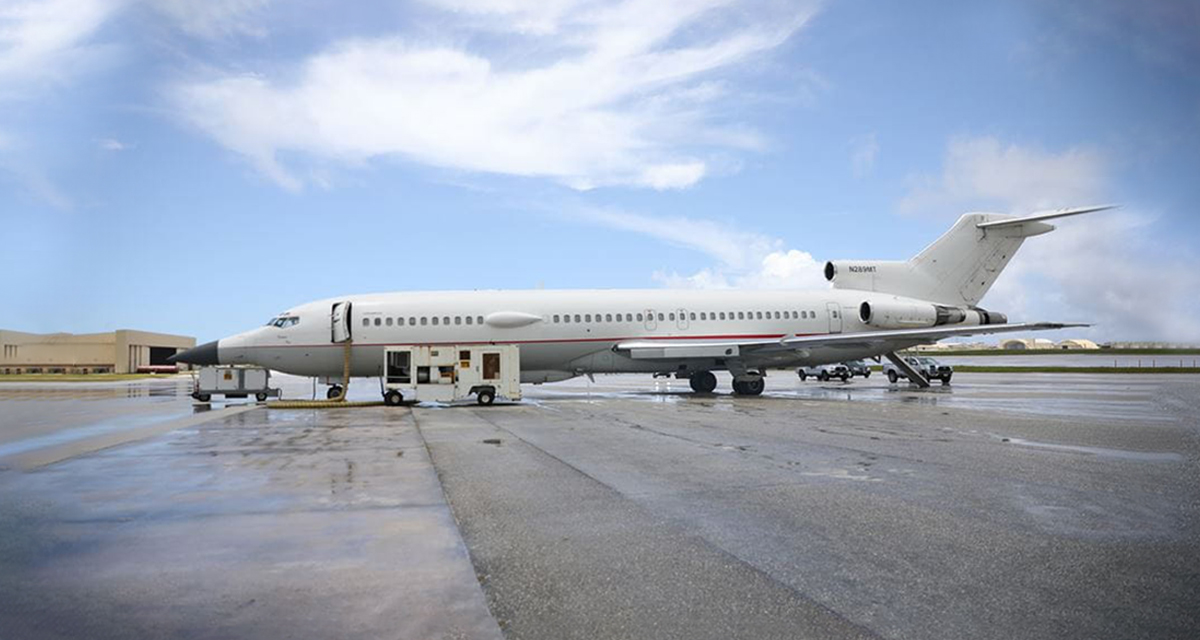
The Raytheon Multi-Program Testbed gets serviced at Andersen Air Force Base in Guam. (Army photo). Photo Courtesy of Raytheon Intelligence & Space.
“There’s a team of people who decide what systems we want to check out and what tests we need to do,” DeFranco said. “My team’s job is to turn that into reality. We coordinate between the airspace, ranges and any external assets that we need for a test. Then, we direct the test onboard the RMT while it’s happening in real time.”
The RMT mission directors work back and forth between the pilots and test crew to make sure the mission goes as planned. And when unexpected challenges pop up – as they’re prone to do in an experimental environment – DeFranco and Sarah Arnac, another RMT mission director, work with the team to overcome them.
“The experiments we did here at Valiant Shield are on the edge, and they’re breathtaking,” Arnac said. “We’re testing new systems and fielding new capabilities. We’re testing systems that haven’t been utilized together before. It’s very exciting to be a part of that.”
Learn more about RI&S’ JADC2 solutions.
